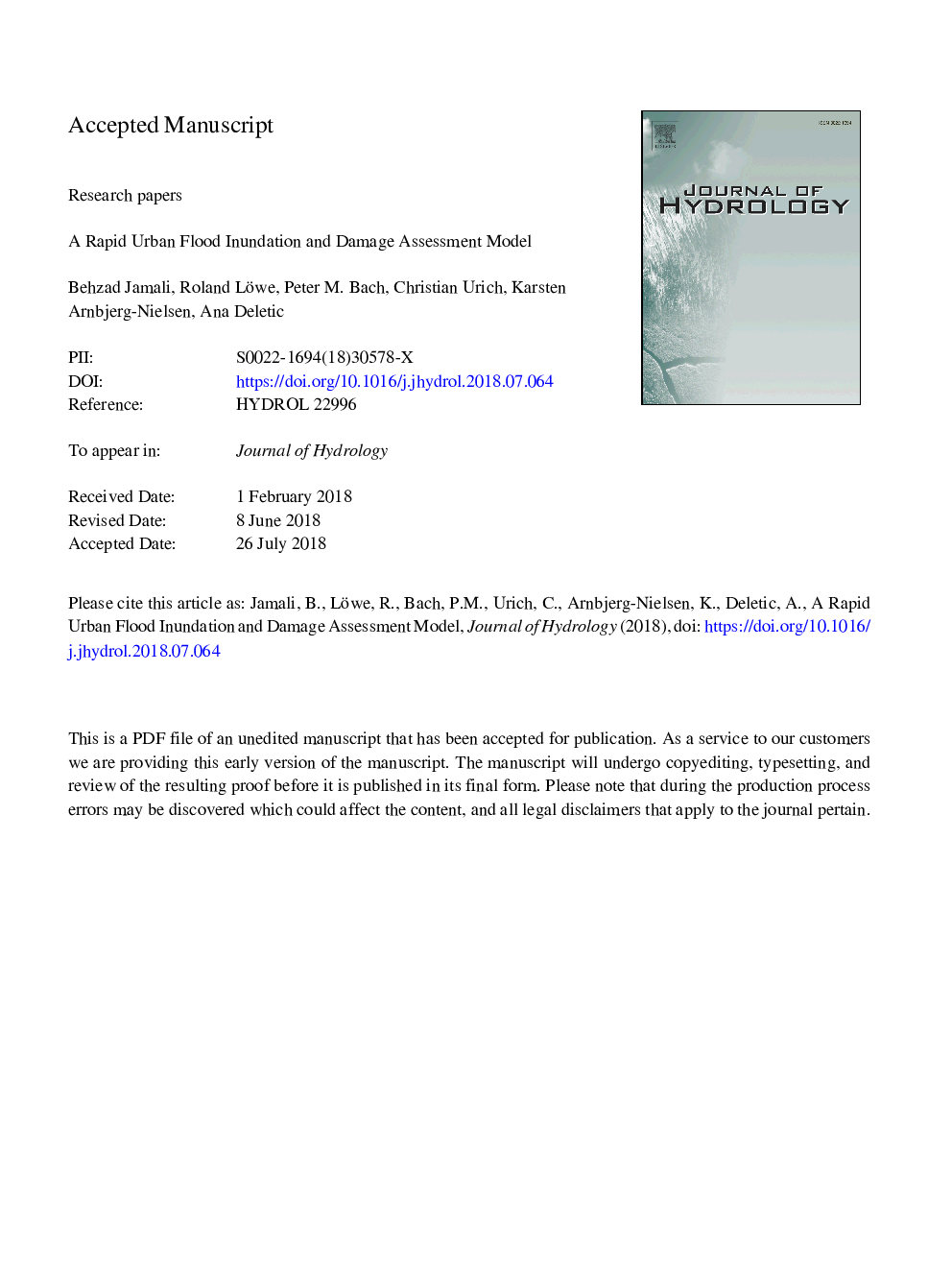| Article ID | Journal | Published Year | Pages | File Type |
|---|---|---|---|---|
| 8894534 | Journal of Hydrology | 2018 | 45 Pages |
Abstract
Urban pluvial flooding is a global challenge that is frequently caused by the lack of available infiltration, retention and drainage capacity in cities. This paper presents RUFIDAM, an urban pluvial flood model, developed using GIS technology with the intention of rapidly estimating flood extent, depth and its associated damage. RUFIDAM integrates a 1D hydraulic drainage network model (SWMM or MOUSE) with an adapted version of rapid flood inundation models. One-metre resolution topographic data was used to identify depressions in an urban catchment. Volume-elevation relationships and minimum elevation between adjacent depressions were determined. Mass balance considerations were then used to simulate movement of water between depressions. Surcharge volumes from the 1D drainage network model were fed statically into the rapid inundation model. The model was tested on three urban catchments located in southeast Melbourne. Results of flood depth, extent and damage costs were compared to those produced using MIKE FLOOD; a well-known 1D-2D hydrodynamic model. Results showed that RUFIDAM can predict flood extent and accumulated damage cost with acceptable accuracy. Although some variations in the simulated location of flooding were observed, simulation time was reduced by two orders of magnitude compared to MIKE FLOOD. As such, RUFIDAM is suitable for large-scale flood studies and risk-based approaches that rely on a large number of simulations.
Related Topics
Physical Sciences and Engineering
Earth and Planetary Sciences
Earth-Surface Processes
Authors
Behzad Jamali, Roland Löwe, Peter M. Bach, Christian Urich, Karsten Arnbjerg-Nielsen, Ana Deletic,
